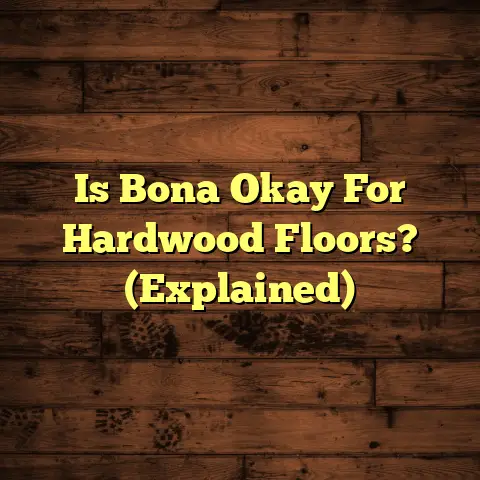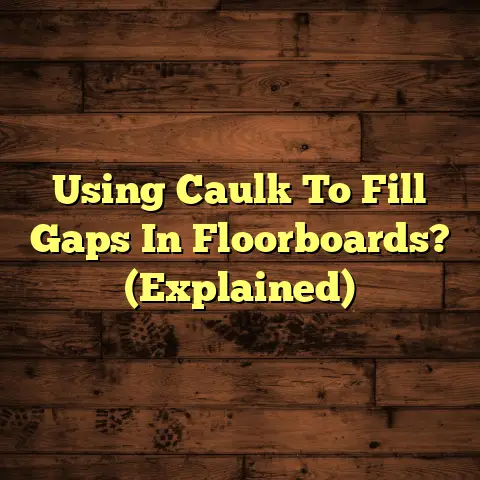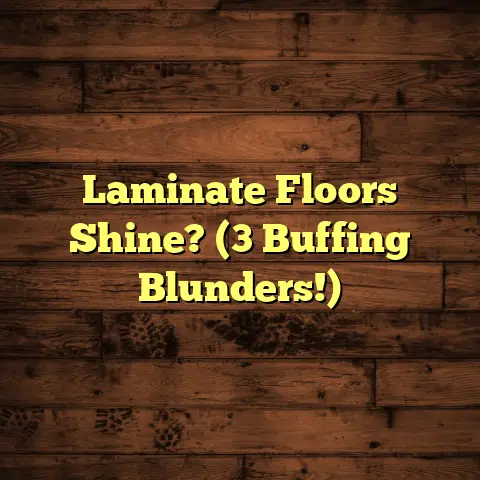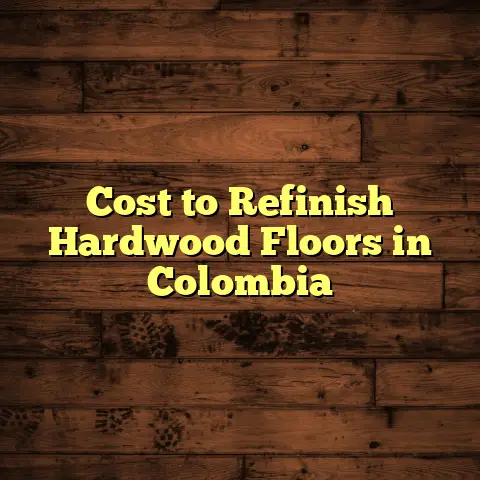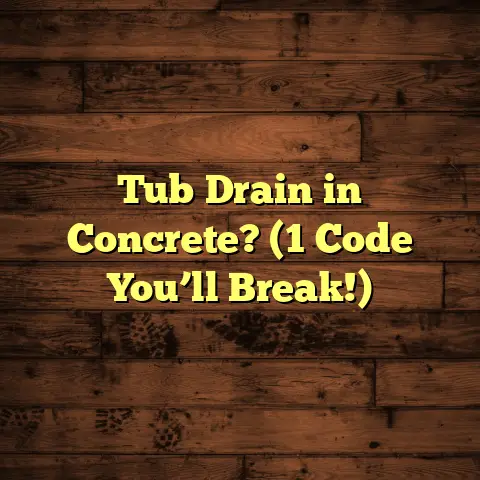Cost to Refinish Hardwood Floors in Uzbekistan
Refinishing hardwood floors is an excellent way to restore the beauty of your home’s flooring without the expense of full replacement. In Uzbekistan, the cost to refinish hardwood floors can vary significantly based on several factors. This article aims to provide a detailed estimate of these costs, discuss various considerations, and offer valuable insights into hardwood flooring.
Overview of Major Cost Factors
1. Area Size
The total square footage of the area to be refinished is one of the most significant factors affecting cost. Larger areas will naturally incur higher labor and materials costs. Generally, floor refinishing costs are calculated on a per-square-foot basis, so understanding the dimensions of your space is crucial.
Example Calculation
For instance, if you have a room that measures 300 square feet, and the average cost to refinish is $3 per square foot, the total cost for refinishing would be: Total Cost=Area×Cost per Square Foot=300 sq ft×3 $/sq ft=900 $\text{Total Cost} = \text{Area} \times \text{Cost per Square Foot} = 300 \, \text{sq ft} \times 3 \, \text{\$/sq ft} = 900 \, \text{\$}
2. Hardwood Type
Different types of hardwood come with varying price tags based on their availability and quality. Common hardwoods include oak, maple, cherry, and walnut, each having distinct costs associated with them.
- Oak: Generally more affordable and widely available.
- Maple: Often denser and more expensive than oak.
- Cherry: Prized for its color and grain; typically on the higher end.
- Walnut: Known for its rich color and durability; usually the most expensive.
The type of hardwood you choose not only affects the cost of refinishing but also impacts the overall aesthetic and durability of your flooring.
3. Labor Costs
Labor costs in Uzbekistan can vary based on the contractor’s experience, the complexity of the job, and regional wage rates. Skilled labor often commands higher prices but can ensure a quality finish.
Average Labor Rates
- Basic Labor: $1 – $3 per square foot
- Specialized Labor (for intricate designs or repairs): $3 – $6 per square foot
4. Additional Considerations
Several other factors can affect the overall cost of refinishing hardwood floors:
Floor Removal
If existing flooring needs removal prior to refinishing, this will add to overall costs. Removal costs can range from $1 to $2 per square foot.
Subfloor Replacement
A damaged subfloor may require replacement, adding further expenses. The cost for subfloor replacement can vary widely based on materials but typically ranges from $1 to $3 per square foot.
Material Grade
Higher-grade materials generally entail higher costs. For example, commercial-grade finishes may be more durable but cost more than standard residential options.
Room Size/Layout
Unusual room shapes may complicate the installation and lead to increased labor costs. For instance, a room with multiple angles or alcoves may require additional cutting and fitting.
Installation Type
The method of installation (nail-down, glue-down, floating) can influence costs as well. Nail-down installations tend to be less expensive than glue-down or floating options.
Detailed Cost Breakdown
Average Cost to Refinish Hardwood Floors
The average cost to refinish hardwood floors in Uzbekistan can be broken down into several categories:
| Service Type | Cost per Square Foot |
|---|---|
| Basic Refinishing | $2 – $5 |
| Extensive Repairs | $5 – $8 |
| High-End Finishes | $8 – $12 |
For a typical room size of 200 square feet, costs could range from:
- Basic Refinishing: $400 to $1,000
- Extensive Repairs: $1,000 to $1,600
- High-End Finishes: $1,600 to $2,400
Different Hardwood Types and Grades
The type of wood you choose will significantly impact your refinishing costs. Here’s a breakdown of common hardwood types and their corresponding costs:
| Hardwood Type | Cost per Square Foot |
|---|---|
| Oak | $3 – $8 |
| Maple | $5 – $10 |
| Cherry | $6 – $12 |
| Walnut | $8 – $15 |
Example Scenario
If you are refinishing a room with oak flooring (300 square feet), using a basic refinishing method at an average rate of $4 per square foot would yield: Total Cost=300×4=1200 $\text{Total Cost} = 300 \times 4 = 1200 \, \text{\$}
If you opt for a higher-end finish on walnut flooring (300 square feet) at an average rate of $12 per square foot: Total Cost=300×12=3600 $\text{Total Cost} = 300 \times 12 = 3600 \, \text{\$}
Hardwood vs. Alternative Flooring Options
When considering flooring options, it is important to compare hardwood with alternatives like laminate, vinyl, and carpet:
| Flooring Type | Cost per Square Foot | Durability | Maintenance |
|---|---|---|---|
| Hardwood | $5 – $15 | 20+ years | Moderate |
| Laminate | $1 – $3 | 10 – 20 years | Low |
| Vinyl | $2 – $5 | 10 – 20 years | Low |
| Carpet | $1 – $5 | 5 – 15 years | High |
Pros and Cons of Each Option
- Hardwood: Offers longevity and visual appeal but comes at a higher price.
- Laminate: Budget-friendly and easy to install; however, it lacks the warmth and authenticity of wood.
- Vinyl: Water-resistant and low maintenance but may not have the same aesthetic appeal as hardwood.
- Carpet: Soft and warm underfoot; however, it is prone to stains and requires more frequent cleaning.
Signs That Hardwood Floors Need Replacement
Before deciding whether to refinish or replace hardwood floors, look for these signs:
Severe Scratches and Dents
If the damage is extensive, replacement may be necessary. Light scratches can often be sanded out, but deep gouges that expose wood beneath may require board replacement.
Water Damage
Significant water damage can compromise the integrity of the wood. If you notice warping or cupping in your boards due to moisture exposure, replacement might be the best option.
Prolonged Cupping or Warping
These issues often require replacement rather than refinishing. If your floors have been improperly installed or maintained under high humidity levels for extended periods, they may need replacing.
Stains That Won’t Come Out
Persistent stains may indicate deeper problems. If stains penetrate deeply into the wood grain, sanding may not resolve the issue.
Pros and Cons of Hardwood Flooring
Advantages
- Aesthetic Appeal: Adds warmth and beauty to any space.
- Durability: Can last for decades with proper care.
- Increases Home Value: Often sought after by homebuyers.
- Easy Maintenance: Regular cleaning keeps hardwood looking great.
- Variety of Finishes: Offers different colors and finishes for customization.
Disadvantages
- Cost: Higher initial investment compared to some alternatives.
- Maintenance: Requires regular upkeep and care.
- Susceptibility to Moisture: Not ideal for very humid environments.
- Scratch Vulnerability: Can be scratched by heavy furniture or pet claws.
- Noise Levels: Can be noisier compared to carpeted floors.
Professional Installation vs. DIY
Professional Installation Costs
Hiring a professional can range from $2 to $6 per square foot depending on the complexity and quality of the work. Professionals bring expertise that can prevent costly mistakes.
Factors Influencing Professional Costs:
- Experience Level: More experienced contractors may charge higher rates.
- Job Complexity: More intricate jobs will require more time and skill.
DIY Considerations
If opting for DIY:
- Tools Needed: Sander, finish applicators, saws, etc. These can cost hundreds.
- Skills Required: Experience with flooring is beneficial; mistakes can be expensive.
- Time Investment: DIY projects often take longer than anticipated.
Tool Costs
Here’s a breakdown of some essential tools you might need for a DIY project along with their average costs:
| Tool | Average Cost |
|---|---|
| Floor Sander | $50 – $100/day |
| Orbital Sander | $30 – $80 |
| Finish Applicator | $10 – $30 |
| Saw | $50 – $150 |
| Vacuum | $30 – $100 |
Questions to Ask Hardwood Flooring Contractors
When selecting a contractor, consider asking:
- What is your experience with hardwood flooring refinishing?
- Can you provide references from past clients?
- What is included in your quote?
- How do you handle unexpected damages?
- What types of finishes do you recommend?
- What is your estimated timeline for completion?
- Do you have liability insurance?
- What methods do you use for dust control during sanding?
Care and Maintenance Tips
To maximize the longevity of hardwood floors:
Regular Cleaning
Sweep or vacuum regularly to remove dirt and debris. A soft-bristle broom or a vacuum without a beater bar is ideal for maintaining your finish.
Avoid Excessive Water
Use a damp mop rather than soaking the floor to prevent damage from excess moisture.
Use Area Rugs
Place rugs in high-traffic areas to reduce wear and tear on your floors. Ensure they have non-slip backing to prevent accidents.
Immediate Spill Cleanup
Address spills quickly to prevent staining or warping. Use a soft cloth and an appropriate cleaner specifically designed for hardwoods.
Seasonal Care
Adjust humidity levels in your home according to seasons. Wood floors thrive in environments where humidity is between 30% – 50%.
Conclusion
Refinishing hardwood floors in Uzbekistan involves various factors that influence overall costs. Understanding these elements—from area size to labor rates—can help homeowners make informed decisions about their flooring projects.
By weighing the pros and cons of hardwood against alternative flooring options, assessing DIY capabilities versus professional help, and considering maintenance tips, you can ensure that your hardwood floors remain beautiful and functional for years to come.
For individuals considering refinishing their hardwood floors or making flooring decisions in general, this guide serves as a comprehensive resource for estimating costs and understanding important considerations.
Additional Considerations for Refinishing Hardwood Floors
To further enhance this guide’s comprehensiveness, let’s delve deeper into some additional considerations that can impact the refinishing process.
Environmental Factors
Humidity Levels
Humidity plays a critical role in both the condition of existing hardwood floors and the refinishing process itself. High humidity can cause wood floors to swell while low humidity can cause them to shrink; both conditions can lead to gaps and cracks over time.
It’s essential to monitor indoor humidity levels before starting any refinishing project. Ideally, keep indoor humidity between 30% and 50%. If your home experiences extreme humidity fluctuations, consider investing in a dehumidifier or humidifier to maintain stable conditions.
Type of Finish
Choosing the right finish for your refinished hardwood floor is crucial for its longevity and appearance:
Oil-Based vs. Water-Based Finishes
- Oil-Based Finishes: These are known for their durability and rich color enhancement but have longer drying times (up to 24 hours) and stronger odors during application.
- Water-Based Finishes: These dry much faster (within hours), have lower VOC emissions (making them environmentally friendly), but might not provide as rich a color enhancement as oil-based options.
Matte vs. Glossy Finish
The choice between matte and glossy finishes comes down to personal preference:
- Matte Finishes: Provide a more natural look but may show dirt more easily.
- Glossy Finishes: Reflect light beautifully but may highlight scratches over time.
Local Regulations
In Uzbekistan, it’s essential to be aware of any local regulations regarding flooring materials and finishes, especially concerning VOC emissions from certain products used in refinishing processes. Ensure that any materials used comply with local environmental standards.
Warranty Considerations
When hiring professionals for refinishing tasks, inquire about warranties on both workmanship and materials. A reputable contractor should stand behind their work, giving you peace of mind regarding any future issues that may arise after refinishing.
The Long-Term Value of Hardwood Floors
Investing in hardwood flooring—whether through installation or refinishing—can significantly enhance your home’s value over time.
Increased Resale Value
Homes with hardwood floors tend to sell faster than those with carpet or vinyl due to buyer preference for natural materials. According to various real estate studies, homes with hardwood floors can see increases in resale value ranging from 2% to 10%, depending on market conditions and location.
Longevity
Hardwood floors can last generations when properly cared for—often over 100 years—making them a sustainable choice compared to other flooring options that may need replacement after just a decade or two.
Timeless Appeal
The classic elegance of hardwood flooring never goes out of style; they can complement any design aesthetic from traditional homes to modern spaces.
Final Thoughts
Refinishing hardwood floors is not just about maintaining aesthetics; it’s about preserving an asset that adds significant value to your home. Understanding all aspects—from costs associated with different types of wood finishes to labor requirements—will empower homeowners in Uzbekistan to make informed decisions regarding their flooring options.
By following best practices in maintenance and care while considering all aspects discussed in this guide—from environmental factors impacting wood flooring performance to local regulations—you can ensure that your investment continues to pay dividends well into the future.
In conclusion, whether you decide on professional refinishing services or take on a DIY project, knowing what lies ahead will prepare you for success in maintaining one of your home’s most beautiful features—its hardwood floors.
